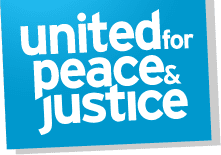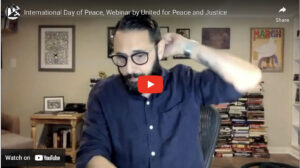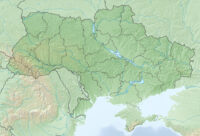From Banning Threat of Use to
Delegitimizing and Stigmatizing Nuclear Deterrence
Jacqueline Cabasso, Executive Director, Western States Legal Foundation;
National Co-convener, United for Peace and Justice
UFPJ Briefing Call, September 18, 2017
On August 8, President Trump shocked the world when he warned North Korea that it will be
“met with fire and fury and frankly power, the likes of which this world has never seen before,”
if it does not stop threatening the United States. I was in Nagasaki, where it was August 9 – the
72nd anniversary of the US atomic bombing of the city. Trump’s threat was the top news story. It
was an expression of nuclear deterrence in its crudest and most naked form.
Today, nearly 15,000 nuclear weapons, most an order of magnitude more powerful than the
Hiroshima and Nagasaki bombs, 94% held by the U.S. and Russia, continue to pose an
intolerable threat to humanity and the biosphere.
On December 22, 2016, President-elect Trump tweeted: “The United States must greatly
strengthen and expand its nuclear capability until such time as the world comes to its senses
regarding nukes”.
On July 7, I was at the United Nations to witness the adoption, by the majority of the world’s
countries, of a historic treaty to prohibit the possession, development, testing, use and threat of
use of nuclear weapons. The vote, by 122 to 1, unambiguously demonstrates that most of the
world has indeed come to its senses regarding nuclear weapons.
But we stand at a nuclear crossroads, with a sharply divided world. While the Ban Treaty represents the total repudiation of nuclear deterrence by most of the states that don’t possess or rely on nuclear weapons, in a joint statement following the vote, the US, France and the United Kingdom declared: “We do not intend to sign, ratify or ever become party to [the Treaty].”
In January, the Bulletin of the Atomic Scientists moved the hands of its “Doomsday Clock” to 2-
1/2 minutes to midnight – the closest it’s been since 1953, citing the failure of the international
community “to come effectively to grips with humanity’s most pressing existential threats,
nuclear weapons and climate change.” Derek Johnson, executive director of Global Zero, has
assessed today’s nuclear threat as “an unprecedented moment in human history. The world has
never faced so many nuclear flashpoints simultaneously. From NATO-Russia tensions, to the
Korean Peninsula, to South Asia and the South China Sea and Taiwan — all of the nuclear-
armed states are tangled up in conflicts and crises that could catastrophically escalate at any
moment.”
Tensions on the Korean peninsula have risen to the highest level in decades, as U.S. and North
Korean officials posit threats and counter-threats of pre-emptive military strikes. Even hawkish
former Secretary of Defense, Leon Panetta has warned: “We have the potential for a nuclear war
that would take millions of lives. So I think we have to exercise some care here.”
This isn’t the only nuclear flashpoint. Tensions between the United States/NATO and Russia
have risen to levels not seen since the Cold War, with the two nuclear giants confronting each
other in Ukraine, Eastern Europe, and Syria, and an accelerated tempo of military exercises and
war games, both conventional and nuclear, on both sides. At the end of January, 87 U.S. tanks, 144 armored vehicles and 3,500 troops took part in a demonstration of NATO firepower in Poland. According to General Ben Hodges. The commander of the U.S. Army in Europe. “This is the largest ever U.S. deployment in Poland and it’s about deterrence. An outright attack by Russia is unlikely, but the best way to keep it unlikely is to do what we’re doing here today.”
Russia saw the deployment as a “serious threat” according to Putin’s spokesperson Dmitry Peskov.
And former Soviet President Mikhail Gorbachev warned that “it all looks as if the world is preparing for war.” As he wrote in Time magazine: “More troops, tanks and armored personnel carriers are being brought to Europe. NATO and Russian forces and weapons that used to be deployed at a distance are now placed closer to each other, as if to shoot point-blank.”
As we speak, the “Zapad 2017” (West 2017) war games, the biggest Russian war games in years, are taking place in western Russia, Russia’s exclave of Kaliningrad, and Belarus, a Russian ally which borders Ukraine as well as NATO member states Poland, Latvia and Lithuania. Russia says almost 13,000 Russian and Belarussian service personnel are taking part, as well as around 70 planes and helicopters. It says almost 700 pieces of military hardware are being deployed, including almost 250 tanks, 10 ships and various artillery and rocket systems. Russian President Vladimir Putin has chosen to observe the war games rather than attending the UN General Assembly. NATO is on edge.
While the Ban Treaty negotiations were taking place in the United Nations, two floors up in the same building, in an emergency meeting of the UN Security Council, the United States was threatening military action against North Korea, in response to its July 4 missile test.
We must keep both realities – the promise of the Ban Treaty and growing dangers of nuclear war – fully in mind as we develop strategies to accomplish the urgent goal of a world without nuclear weapons.
Donald Trump entered office with the US poised to spend at least one trillion dollars over the next 30 years to maintain and modernize its nuclear bombs, warheads and delivery systems, and the infrastructure to sustain the nuclear enterprise indefinitely. Russia, China, France, the United Kingdom, India, Israel and Pakistan are all engaged in nuclear weapons modernization programs.
While the personality at the top of the US government changes from time to time, US national security policy has been remarkably consistent in the post-World War II and post-Cold War eras – despite dramatically changed geopolitical conditions and very different presidential styles. “Deterrence,” the threatened use of nuclear weapons, has been reaffirmed as the “cornerstone” of US national security by every President, Republican or Democrat, since 1945, when Harry Truman, a Democrat, oversaw the atomic bombings of Hiroshima and Nagasaki. Last October, President Obama’s UN Ambassador, Robert Wood, condemned the Ban Treaty in the General Assembly: “Advocates of a ban treaty say it is open to all, but how can a state that relies on nuclear weapons for its security possibly join a negotiation meant to stigmatize and eliminate them”.
Immediately following the July 7 UN vote, the US, France and the UK jointly declared: “Accession to the ban treaty is incompatible with the policy of nuclear deterrence, which has been essential to keeping the peace in Europe and North Asia for over 70 years. A purported ban on nuclear weapons that does not address the security concerns that continue to make nuclear deterrence necessary cannot result in the elimination of a single nuclear weapon and will not enhance any country’s security, nor international peace and security.”
What exactly does deterrence mean? During the Cold War, deterrence was popularly understood to mean maintaining the capacity to inflict a devastating retaliatory second strike, or “mutually assured destruction,” if either the United States or the Soviet Union attacked the other with nuclear weapons. Deterrence is used today by nuclear-armed and nuclear-dependent states as an all-purpose justification for the perpetual possession and threatened use of nuclear weapons. Regrettably, more than half the world’s population lives in countries whose national security postures explicitly depend on the doctrine of nuclear deterrence.
A 2008 US Department of Defense Report defines nuclear deterrence this way:
“Nuclear deterrence is achieved by credibly threatening a potential adversary with the use of nuclear weapons so as to prevent that adversary from taking actions against the United States, its allies, or its vital interests. This is accomplished primarily by maintaining sufficient and effective nuclear capabilities to pose unacceptable costs and risks upon the adversary should it so act.”….
“Though our consistent goal has been to avoid actual weapons use, the nuclear deterrent is ‘used’ every day by assuring friends and allies, dissuading opponents from seeking peer capabilities to the United States, deterring attacks on the United States and its allies from potential adversaries, and providing the potential to defeat adversaries if deterrence fails.”
In other words, the US uses the threat of nuclear attack the same way a bank robber uses a gun held to head of a bank teller.
“Unfortunately,” as former UN Secretary-General Ban Ki-moon noted in 2008: “[T]he doctrine of nuclear deterrence has proven to be contagious. This has made non-proliferation more difficult, which in turn raises new risks that nuclear weapons will be used.”
With no acknowledgement of their own responsibility, in their July 7 joint statement, the US, France and the UK charged the Ban Treaty with “creating even more divisions at a time when the world needs to remain united in the face of growing threats, including those from the DPRK’s ongoing proliferation efforts. This treaty offers no solution to the grave threat posed by North Korea’s nuclear program, nor does it address other security challenges that make nuclear deterrence necessary.” Little known by the public and little reported, the US regularly conducts flight tests of its Minuteman III intercontinental ballistic missiles from Vandenberg Air Force Base in California to Kwajalein atoll in the Marshall Islands.
The US maintains 448 Minuteman III missiles, fully capable of devastating North Korea, on high-alert. The most recent test launch was August 2. Prior to a similar test in 2016, Deputy Defense Secretary Robert Work told reporters: “We and the Russians and the Chinese routinely do test shots to prove that the operational missiles that we have are reliable. And that is a signal… that we are prepared to use nuclear weapons in defense of our country if necessary.” Each of these test launches is a threat of use.
The Ban Treaty’s unambiguous prohibition of threat of use is an essential point for the peace movement and civil society in the nuclear-armed and nuclear-dependent states to highlight in our public education and advocacy. The ideology of nuclear deterrence must be delegitimized and stigmatized to make progress on abolishing nuclear weapons, and our task is to change the discourse – from the bottom up. This, I believe is the most important thing we can do. Changing the discourse will require the courage not only to “speak truth to power,” but also to speak truth to each other.
In this time of multiple global crises, our work for the elimination of nuclear weapons must take place in a much broader framework, taking into account the interface between nuclear and conventional weapons and militarism in general, the humanitarian and long-term environmental consequences of nuclear war, and the fundamental incompatibility of nuclear weapons with democracy, the rule of law, and human wellbeing.
To build the necessary political will in the nuclear-armed and nuclear-dependent states, we will need to move public opinion from the irrational fear-based ideology of deterrence to the rational fear of an eventual nuclear weapon use, whether by accident or design, by some nuclear-armed state that places its own survival above the survival of its people. We will also need to stimulate a rational hope that security can be redefined in humanitarian and ecologically sustainable terms that will lead to the elimination of nuclear weapons and dramatic demilitarization, freeing up tremendous resources desperately needed to address universal human needs and protect the environment.


